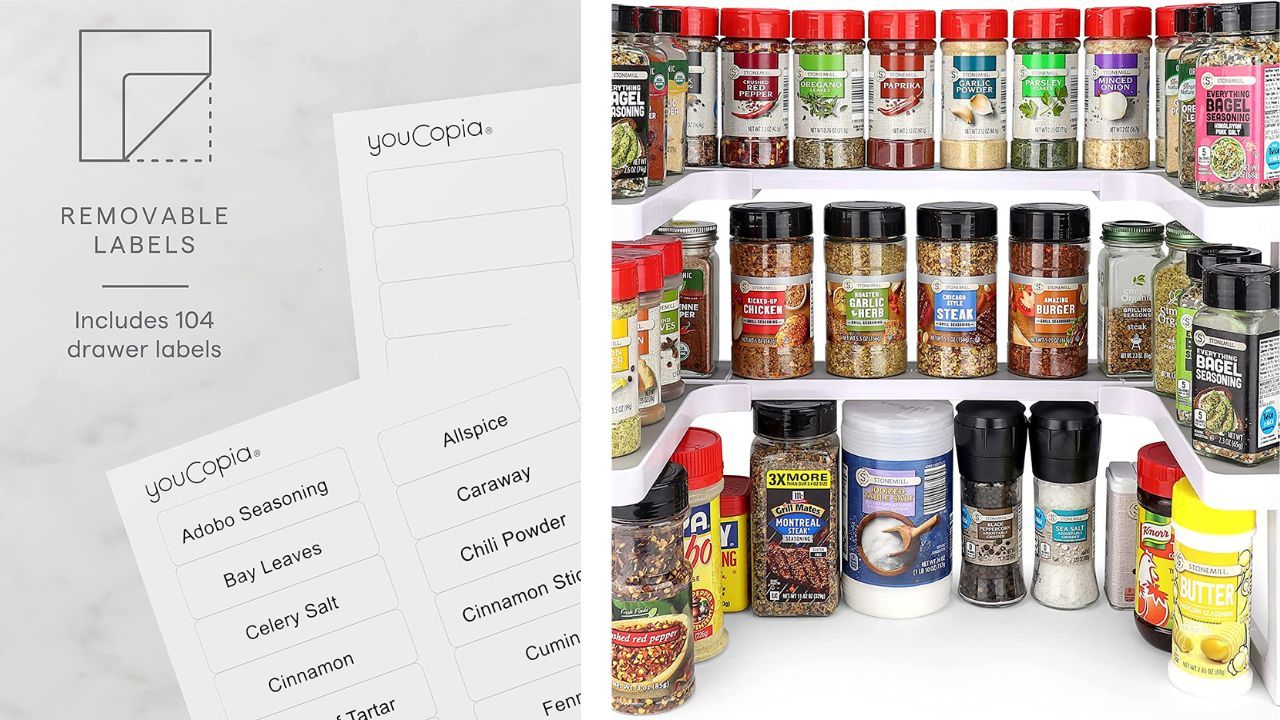Spice Up Your Life: How to Organize Your Spice Rack Using These Easy Steps
Take your meals from dull and boring to delicious and dynamic by coming up with a game plan to organize your spices using a spice rack organizer! Read to find out how!

If you are someone passionate about cooking and trying new recipes, then you know just how important spices can be to enliven your kitchen creations. Herbs, cloves, and cayenne pepper can take any dish from dull and boring to delicious and dynamic - but only if you can find what you need! That's why coming up with a game plan for organizing your spice rack is essential.
It doesn’t have to be challenging, however; with the help of some tried and true organizing techniques, you can easily transform your challenge into a desirable and convenient asset. Today, we are walking you through how to spice up your life - literally and figuratively - by showing you how to organize a spice rack in ten easy steps. So, let's get started!
Organizing the Spice Cabinet
Organizing the Spice Cabinet is often a daunting task for many people. There are two schools of thought when it comes to organizing your spices, alphabetical or grouping all similar ones together.
Alphabetizing them can help you quickly find the spice that you need and prevents double buying; however, if you are like one of many home cooks who adds a new spice with each recipe, your cabinet can quickly become unorganized and difficult to navigate.
On the other hand, grouping spices together by type can result in quick recognition when selecting spices, but it may be harder to keep track of what’s running low and need restocking.
Whichever method you choose, it’s important to be aware of limited space. Maximizing your storage space is essential in order to reduce clutter. This means properly labeling jars, weighing out just enough spice into smaller containers or making use of an expandable spice rack if available.
No matter how organized the spice cabinet is, the most important step is having easy access to it.
Where to Put the Spice Rack
It’s always important to consider where the spice rack will best work with the flow of your kitchen or pantry when you’re organizing. Some people prefer to keep their spices hanging on the wall near the stove or above their other cabinets while others prefer to have them tucked away elsewhere in the kitchen.
If space is limited, utilizing a cabinet may be the most efficient option, as some wall storage can make it tough to access individual bottles without opening several containers at once.
When deciding on a location for your spice rack, think about what kind of cook you are and what spices you use most often. If baking plays an essential role in your kitchen, then having your spices nearby would be ideal.
This will allow you to quickly grab what you need without rearranging an entire area. However, if savory dishes are more of your specialty, having the rack located near a stovetop could be beneficial. This way, you won't waste time running back and forth to get all the ingredients that you need.
No matter how much counter space or wall space is available, there’s probably a perfect place in the kitchen or pantry for a spice rack that will make cooking easy and efficient.
Maximizing Space with Jars and Containers
One key element in organizing a spice rack is finding jars or containers that effectively use the available space. If you opt for this route, make sure to consider the size and shape of each jar, as not all are created equal. Larger sized square jars offer the most storage capacity over small round jars.
Additionally, to fit more into your shelf space, spice bottles with an adjustable label height feature may be useful as it allows for custom heights and provides for more efficient stacking.
Financial consideration must also be taken into account when choosing jars and containers for your spices. To keep costs low, glass canning jars or jam jars from local stores are often a cheap and practical choice. Plastic bottles and containers can also be used; however, if these contain any type of BPA, they should be avoided. When in doubt, always check with the manufacturer before selecting a product.
On the other hand, there are drawbacks to using jars and containers for spices instead of individual bottles. In particular, larger ones tend to take up more physical space than smaller bottles which means there may not be enough room to store all of your varieties in the same area.
That said, if you plan ahead and ensure that the largest spice items are at the back of the shelf while smaller items go in front, this should help with keeping them organized on one shelf level.
Overall, regardless of whether or not you choose to organize your spices with jars and containers or individual bottles is entirely up to personal preference and how much free space you have available on your shelves or drawers.
With careful planning, either option can create a successful and organized system that makes life easier in the kitchen when trying to cook something delicious! Now that we have discussed where to put your spice rack and maximizing space with jars and containers, it is time to move on to ensuring a clean setup by laying down some rules around organizing your ingredients.
Rules of Organizing Spices
Organizing spices can be done in different ways, depending on user preference and the amount of space available. One method is to organize them according to flavor profile or cuisine. This would require some analysis of which spices are used together and grouping them together by type.
While this method is quite helpful for those with a broad selection of spices, it may be difficult for those who cook using many different recipes.
Additionally, this can result in a cluttered shelf if there are too many glass jars or containers being used. On the other hand, organizing alphabetically is also popular among spice rack owners, as it makes finding spices much easier.
Furthermore, considering that most larger spice companies label the caps with names and symbols making identification easy, this makes alphabetical order especially ideal. As long as it is properly labeled and proper space is maximized so that no bins or jars topple over or get crushed under another item, this system will work great.
Tips for Spicing Up Your Storage
The most common way to store spices is in a spice rack, but you may want to consider alternative storage options as well. There are compelling arguments for both sides of the issue.
For example, if you prefer open storage, hanging baskets are great because they can be easily mounted anywhere and allow spices to breathe, which can extend their shelf life. Aside from reducing clutter, keeping herbs and spices near their point of use improves convenience when it comes to cooking.
However, many chefs prefer a closed-storage option such as a carousel or wall-mounted spice rack as this keeps things looking tidy and helps shield the flavors of your herbs and spices from heat and humidity.
Whichever storage solution you choose, making sure to buy containers with tight-fitting lids is key if you want your herbs and spices to maintain their flavor for longer. No matter how you decide to approach it, don’t forget to label each container; otherwise you won’t know which is which when the time comes to prepare a delicious meal!
With these helpful tips in mind for spicing up your storage, let’s move on to an even more important step: keeping your spice rack organized!
Keeping Your Spice Rack Organized
There is no doubt that organization is key in your kitchen. For instance, having a rack where items are grouped by type—all the dry herbs on one level, all the ground spices on another—helps you find what you need without having to search through hundreds of little jars.
You can also use empty spice jars to store similar items, such as nuts, seeds, herbs and other small ingredients.
Another way to stay organized is to make sure that all labels face outwards so that you can effortlessly select different seasonings when preparing a dish. This keeps both the seasoning jars and your cabinet area neat and clean.
Consider using hanging racks for extra spicy storage options or consider other dividers if your racks are too crowded.
It’s also important to dispose of old or expired seasonings in order to make space for new ones as needed. This can be done by conducting a full inventory of your stock every few months or so.
When organizing spices into cabinets or drawers designate specific areas so each one stays confined in its own sector with its own unique identifier like a label or group name.
In addition, always remember that an easy way to remain organized and neat is by keeping like with like; curry powder goes together, peppermint extract goes together, etc….
Organization is an essential part of working in the kitchen which extends far beyond the realm of spices. Utilizing basic organizational tools such as labels, racks, drawers and bins helps keep your cooking process efficient and also provides neatness which everyone loves, especially during mealtime preparations when things tend to get messiest.
Keeping a clean and neat kitchen helps reduce stress levels when searching for ingredients and making meals more enjoyable overall!
However, if you need to get organized and you do not have a spice rack yet; then click the button below so that you can see what we have reviewed and researched for you so that you and your spices can be super organized for your next meal!

